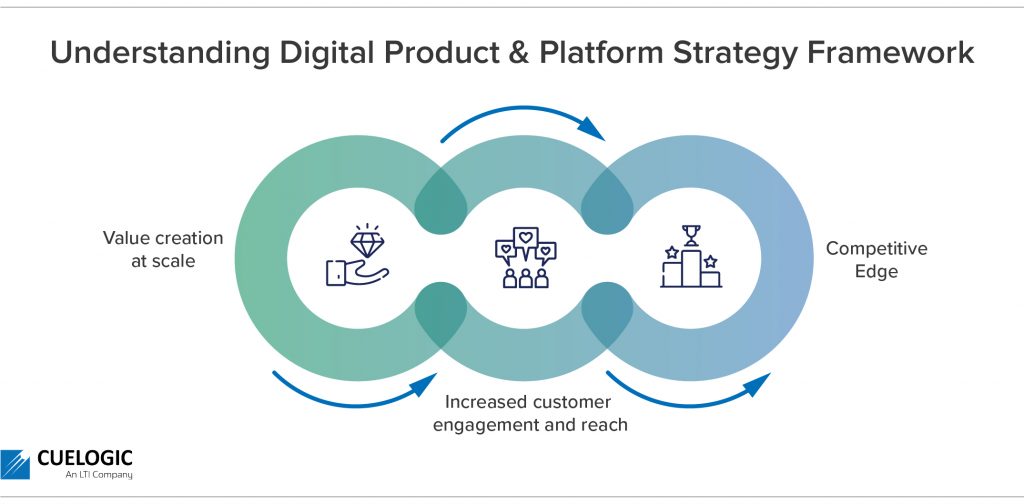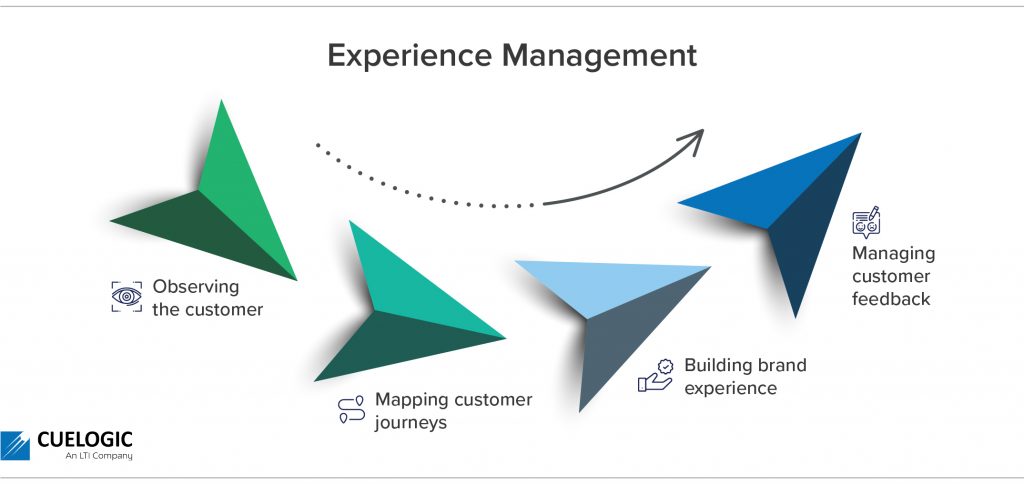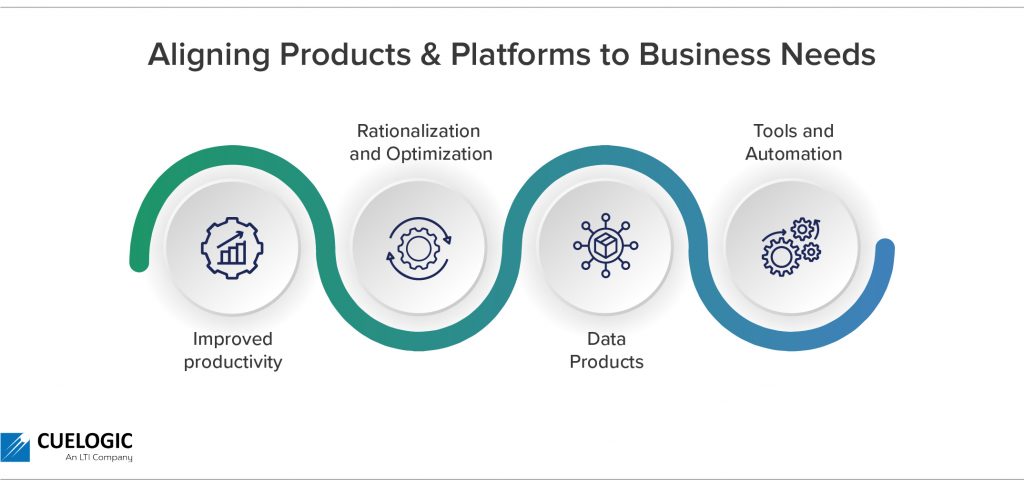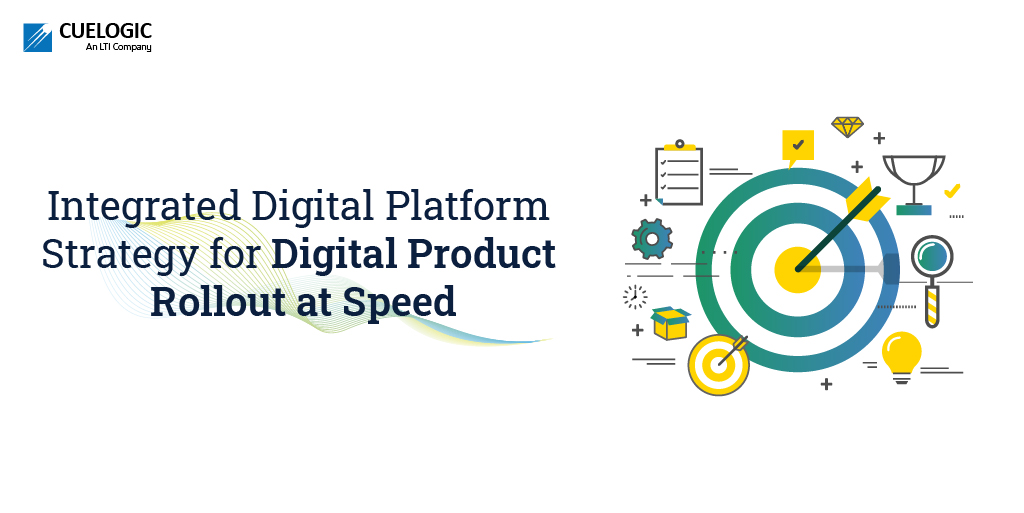The onset of the age of integrated digital software product has marked the maturity of digital transformation as a business strategy for enterprises. The ceaseless evolution of the digital world has warranted organization to shift their focus to digital products and platforms – the holy grail of customer acquisition and retention. They have become the bedrock of new value creation and the critical source of competitive advantage.
In fact, of the $100 trillion that digital transformation is geared to add to the global economy by 2025, about two-thirds are attributed to platform-driven interactions.
This pegs the importance of having a robust digital product and platform strategy for enterprises.
Understanding digital product & platform strategy framework
A digital platform can be defined as a technical architecture that enables the construction, deployment, management, and governance of digital products and services. In other words, the plumbing allows one segment of participants to provide value to the other.
A platform strategy is an enterprise’s game plan for creating, deploying, and managing its digital products and platform. It dictates the cost and risk profile the enterprise is willing to take on, and the product’s speed matures while riding on the network effect.

A well-defined platform strategy empowers organizations to realize benefits such as:
Value creation at scale:
Enables an organization to quickly create and offer new products and services by leveraging the underlying platform, accelerating time-to-market.
Increased customer engagement and reach:
By virtue of the increased engagement, enterprises can acquire new customers and deepen relationships with existing ones.
Competitive edge:
A platform-based business model can offer a competitive edge as it is harder for competitors to replicate the exact network effort that led to the proliferation of the platform among users.
Tenets of new-age digital products & platforms
In accordance with the LTI’s innovation and development philosophy, new age integrated digital products and platforms must be characterized by a few standard features that make them different from traditional web applications. They are:
Experience management
Weaving a differentiated experience for users with the end goal of leading to memorable customer interactions. Setting up processes to manage every user touchpoint gives dedicated care to how users perceive the digital product and the organization. Key pillars of sound experience management include:

Observing the customer:
How they interact with the digital product , what their needs are, how these needs change over time, and why do the needs exist in the first place.
Mapping customer journeys:
Segregating different customer touchpoints such as online chats, social media interactions, marketing emails, etc., and looking at them in isolation.
Building a brand experience:
Creating a consistent digital product identity that reflects every customer interaction and fulfills a tangible or intangible need.
Managing customer feedback:
Analyzing feedback regularly to integrate customers into the experience management process and build meaningful customer relationships over time.
Aligning products & platforms to business needs
Adopting a product mindset to see the world from a different lens and identify business needs that the product can fulfill is another critical pillar of a new-age digital businesses . It involves carefully decoding business requirements and mapping them to relevant product capabilities. This helps steer the efforts of enterprise resources in the direction of features that can create value for the business and pave the way for unprecedented interdepartmental collaboration.

Strategic alignment between products and business teams leaves the door open for:
Improved productivity with internal products:
Enterprises can achieve scale and improve productivity by aligning the platform with internal products.
Rationalization and optimization:
They can also optimize their platform strategy and achieve efficiencies by scrutinizing the entire architecture and identifying gaps.
Data products:
Enterprises can take their product strategy up a notch by understanding how data can be used to create new products and services.
Tools and automation:
By leveraging the right tools and automation, enterprises can make their platform more agile and responsive to market needs.
APIs
The third pillar of new-age integrated digital products and platforms, APIs, is the backbone that allows different applications to talk to each other. They facilitate a high degree of integration and composability, thereby empowering enterprises to build a digital society of solutions that can be used to deliver engaging ecosystems to customers.
To achieve composability at scale, enterprises need to design their API strategy with a few things in mind:
Ecosystem of APIs:
A single API cannot serve the needs of all applications in an enterprise. Instead, a network of APIs needs to be designed with a specific purpose.
API management strategy:
Creating and managing APIs at scale is complex. Therefore, an effective API management strategy must dictate that APIs are designed, published, and managed consistently.
Development priorities:
Ideally, APIs must be at the heart of a digital business. In case they aren’t, APIs come incrementally in the form of experiments and pilots, gradually increasing in scale as the need for integration and composability grows.
Data
Data is the new oil, and a digital product and platform that wants to be future-proof must have a data management strategy. This includes having a solution for ingesting, processing, and analyzing data to draw numerous insights that can be used to improve customer experience and business efficiency. A digital product and platform must also have the capability to store data securely and make it accessible to authorized users with end-to-end management capabilities. The fourth pillar of a successful product is, therefore, data management, which must be approached with the following considerations in mind:
Data security and privacy:
In an era of data breaches and strict regulations, it is essential to have a robust data security strategy to protect customer information from internal and external threats.
Data governance:
Any product and platform strategy must clearly understand what data is being collected, how it is being used, and by whom. This requires setting up processes and policies for data management and appointing a team of experts who can monitor compliance.
Integration:
The digital product and platform must integrate with multiple internal and external data sources to get a 360-degree view of the customer.
Delivery infrastructure
A digital software product must have a delivery infrastructure designed for scalability and reliability. This means having a robust architecture that can support the needs of product developers and operations teams. The fifth pillar of a successful product , therefore, is the delivery infrastructure, which must be approached with the following considerations in mind:
Microservices:
Software product must be designed as loosely coupled microservices that can be independently deployed and scaled.
Containerization:
To further improve the flexibility of microservices, they must be containerized and run in a managed environment.
Orchestration:
Software product components must be orchestrated to allow them to interact with each other seamlessly.
Monitoring and logging
To ensure the software product’s stability, it is essential to have a comprehensive monitoring and logging strategy in place.
Conclusion – Importance of an experience-driven approach
Digital product and platform cannot be successful without a focus on the customer experience. In the digital age, customers expect a personalized, omnichannel experience relevant to their needs and devoid of friction. Therefore, a digital product and platform must have the ability to deliver an engaging ecosystem to customers.
To achieve composability at scale, enterprises need to design, build, and operate their products with an experience-driven approach, which starts with understanding the customer journey and mapping it to the ecosystem of products. Only by taking an experience-driven approach will a product be able to provide the level of customer engagement that is required in the digital age.
